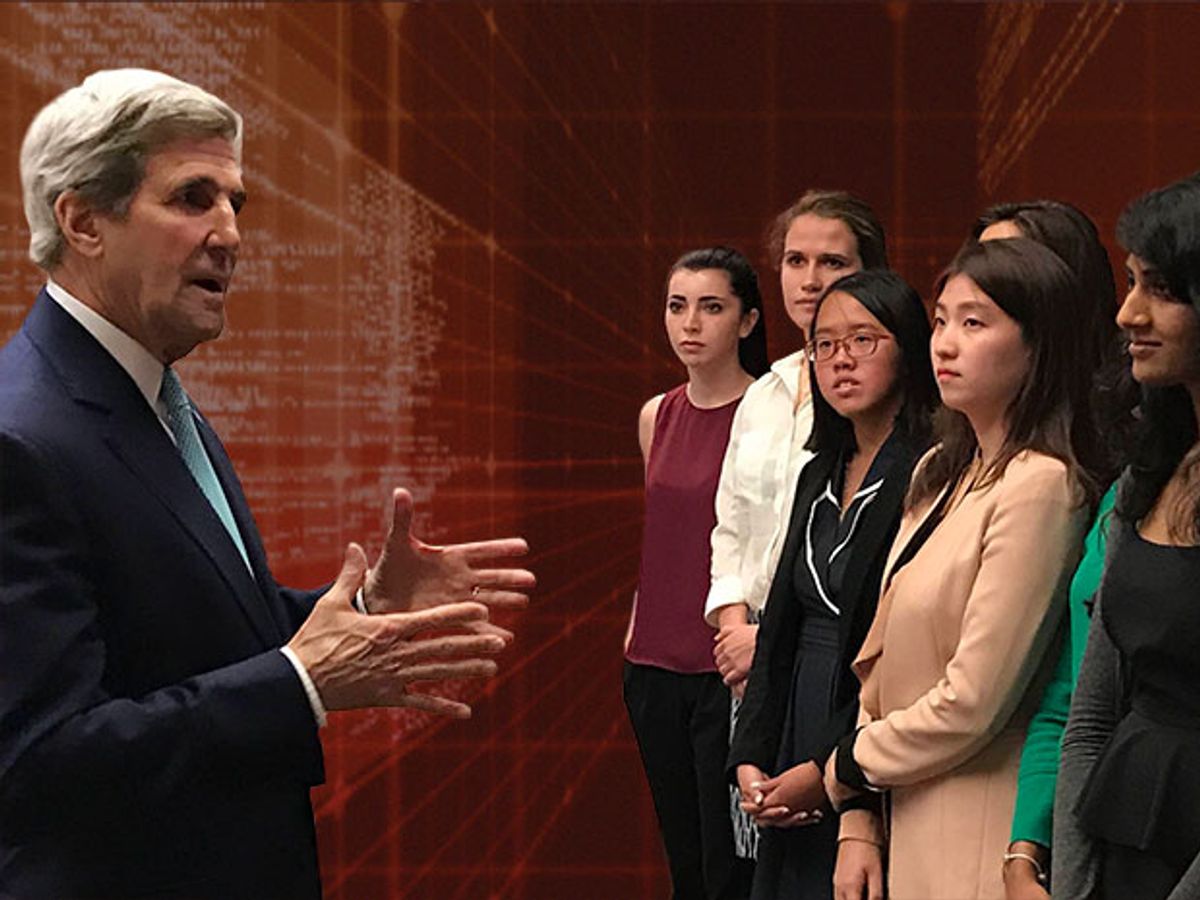How do you deter people from joining violent extremist groups? How can organizations better coordinate to help Syrian refugees? How do you get better data on missing or dead refugees? What can we do about the growing problem of space debris?
These were some of the challenges given by U.S. State Department officials to students in Stanford’s inaugural Hacking for Diplomacy class. The 10-week effort that ended last week, didn’t develop turnkey solutions—that wasn’t really the point. But they did come up with some fresh ideas.
The class, the first ever, follows a path set by Stanford’s successful Hacking for Defense class, first offered early this year and now being taught around the country. It clearly fills a need, Zvika Krieger, the State Department’s Silicon Valley representative and one of the instructors, told an audience of students, venture capitalists, leaders of Silicon Valley tech companies, diplomats from France, Great Britain, and Denmark, and a United Nations representative at the final class presentations last week.
“Big tech companies have as much impact on foreign policies as countries we have embassies to do,” Krieger said. But “tech is not high on the list of skills our diplomats have.” One goal of this class, he said, was to bring tech knowledge to the State Department; just as important, though, is to “convince the next generation of tech, engineering, computer science, and business students that their skill sets have something to offer the State Department.”
The class used the Lean Startup Model, involving multiple design iterations and extensive customer feedback. To attack the problems set out by their State Department sponsors—which included the Office of Space and Advanced Technology, the Bureau of Population, Refugees, and Migration, and the Bureau of Conflict and Stabilization Operations, among others—each group of three to six students talked to some 100 people involved in the problem or its solution. In most cases, these discussions prompted teams to pivot, that is, change either their definition of the problem, their approach to solving it, or both.
For example, Team Exodus, working on the Syrian refugee problem, spent most of their 10 weeks trying to figure out how to connect private companies looking to help with the appropriate non-governmental organizations (NGOs) working in the field. They then found that similar efforts were underway. In the ninth week, pivoting to focus on refugees as customers, they built an intelligent chat-bot that allowed refuges to use Facebook Messenger to ask for such specific types of help as where can I get clothing, or how can I apply for a visa. The chat-bot automatically taps into a network of NGOs to obtain answers, then builds a database of the answers for later reference. An early version of that chat-bot is already up and running.
Another team, Team Hacking CT, took a while to figure out how to use online tools to deter people from joining violent extremist groups. The team concluded that rather than trying to reach the at-risk people themselves, they solution involved providing resources and support for their family and friends concerned about their radicalization, via a support text-line, similar to those used for suicide prevention.
Team Space Evaders started out trying to track space debris, then decided that they could have more of an impact by developing a “debris footprint” to rate satellites before they are sent into orbit on how much space junk they would eventually generate. The team hopes this will lead to standards that encourage satellite makers to reduce the potential debris.
And Team 621/Fatal Journeys made several big pivots, after quickly determining, thanks to advice from people they consulted, that working with smugglers would be a really bad idea. They settled on a decidedly low-tech way to help identify refugees who died during the journey—a wristband, similar to those issued by hospitals, with identification and family contact information, advertised on Facebook and WhatsApp, and handed out for free by the Red Cross and similar organizations.
Addressing the students at the final class session, Steve Blank, a member of the teaching team and pioneer of the Lean Startup concept, said: “The good news is that you are going to look back on this and say, ‘I can’t believe we were able to do all this work in 10 weeks. The bad news is that this is going to set the bar for you and all the organizations you lead and manage in the future, because you now know what a competent team, well-led, can achieve.”
More analysis, as well as slides from all the student presentations, are posted in Steve Blank’s blog.
Tekla S. Perry is a senior editor at IEEE Spectrum. Based in Palo Alto, Calif., she's been covering the people, companies, and technology that make Silicon Valley a special place for more than 40 years. An IEEE member, she holds a bachelor's degree in journalism from Michigan State University.



